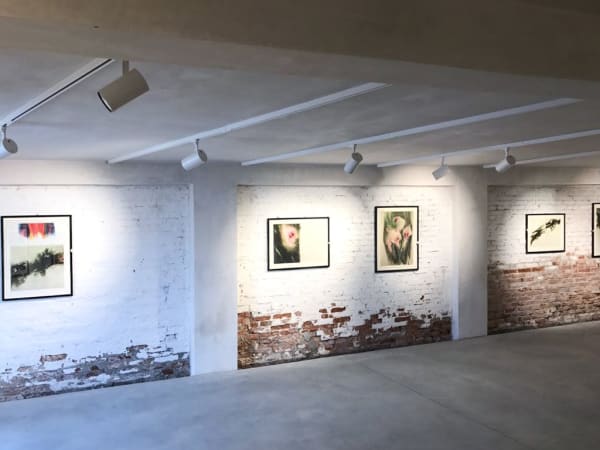DAVIDE BENATI
Selected works
Art Warehouse Zattere
Fondamenta Zattere Ai Saloni 47 30123 Venice
18 October – 26 November 2017
In the spaces of Art Warehouse Zattere in Venice, Galleria d'Arte Maggiore g.a.m. presents a selection of refined works on paper by Davide Benati, showing the most famous series of his production for which the artist is internationally appreciated. From “Terrazze” to “Doni della bassa marea”, till the series “Neve a sera”, the transparency of colors, the lightness of gesture and the elegance of the composition are confirmed to be the stylistic notes of his work. With a strong preference for the delicate technique of the watercolor, in the works by Benati the shapes of nature perfectly combine with the fibers of the rice paper chosen by the artist himself and handmade by craftsmen in Nepal following the Chinese tradition. Paper is therefore transformed from mere medium to integral part of the poetry of his works.
Davide Benati was born in Reggio Emilia in 1949, but his artistic career starts in Milan at the beginning of the 1970s. While the trend is towards conceptual researches, Benati rediscovers the values of painting: he uses above all the watercolor technique because, as the artist himself explains, “in the transparency of the watercolor I find a sort of existential consciousness. Through its clarity I search for light. Something not necessary physical, but rather spiritual”.
A journey in Nepal in 1977 will be of paramount importance for the development of his poetics: here the artist gets in contact with the Eastern culture, being fascinated above all by the Chinese and Japanese world. Rediscovering antique civilizations becomes part of his works, together with the references to literature and philosophy. He takes part to the Venice Biennale for the first time in 1982 and, after the first experiments, it is in this very period that his language definitively takes form: light brushstrokes are applied to thin sheets of paper, letting us see its texture. During the 1980s his works are focused above all on floral themes, with long stems laying gently on the paper or big flowers occupying the entire surface. In any case, what strikes is the delicacy of the forms, dialoguing perfectly with the imperfections of the paper.
In 1990 he takes part again to the Venice Biennial but with a solo show this time. The series “Doni della bassa marea” are dated from this time. It is a group of works related to his previous research: we can see the flowers that so often characterized his works, but from this moment they turns into bright nucleuses, sources generating intense energetic forces that, thanks to the watercolor technique, maintain an halo of softness. The strong friendship with the writer Antonio Tabucchi, and a journey they did together in the North of Portugal, leads Benati to crete to series “Terrazze” toward the mid 1990s. While in Braga, the revelation of a magnificent wooden terrace with and antique and twisted wisteria inspires this series where energetic and substantial brushstrokes reproduce the wisteria's twisted branches, creating an elegant dialogue with the empty spaces on the paper or, in other cases, with beams of bright and vivid colors. Then there is the series “Segrete”, where mysterious portals open towards darkness.
The new millennium starts with the series “Neve a sera”. The artist realizes surfaces that are almost monochromatic and marked by vanishing and rarefied appearances. It seems we are looking at stories about far away travels making us live the experience of new landscapes. Sometimes they are pure and freezing, other times scorching and obscure.
In the meanwhile his painting has conquered some of the most important cities in the world, such as Paris, Zurich and New York. Therefore, the exhibition at Art Warehouse Zattere will offer a new occasion to appreciate once again the lightness, intensity and delicacy of his works.




